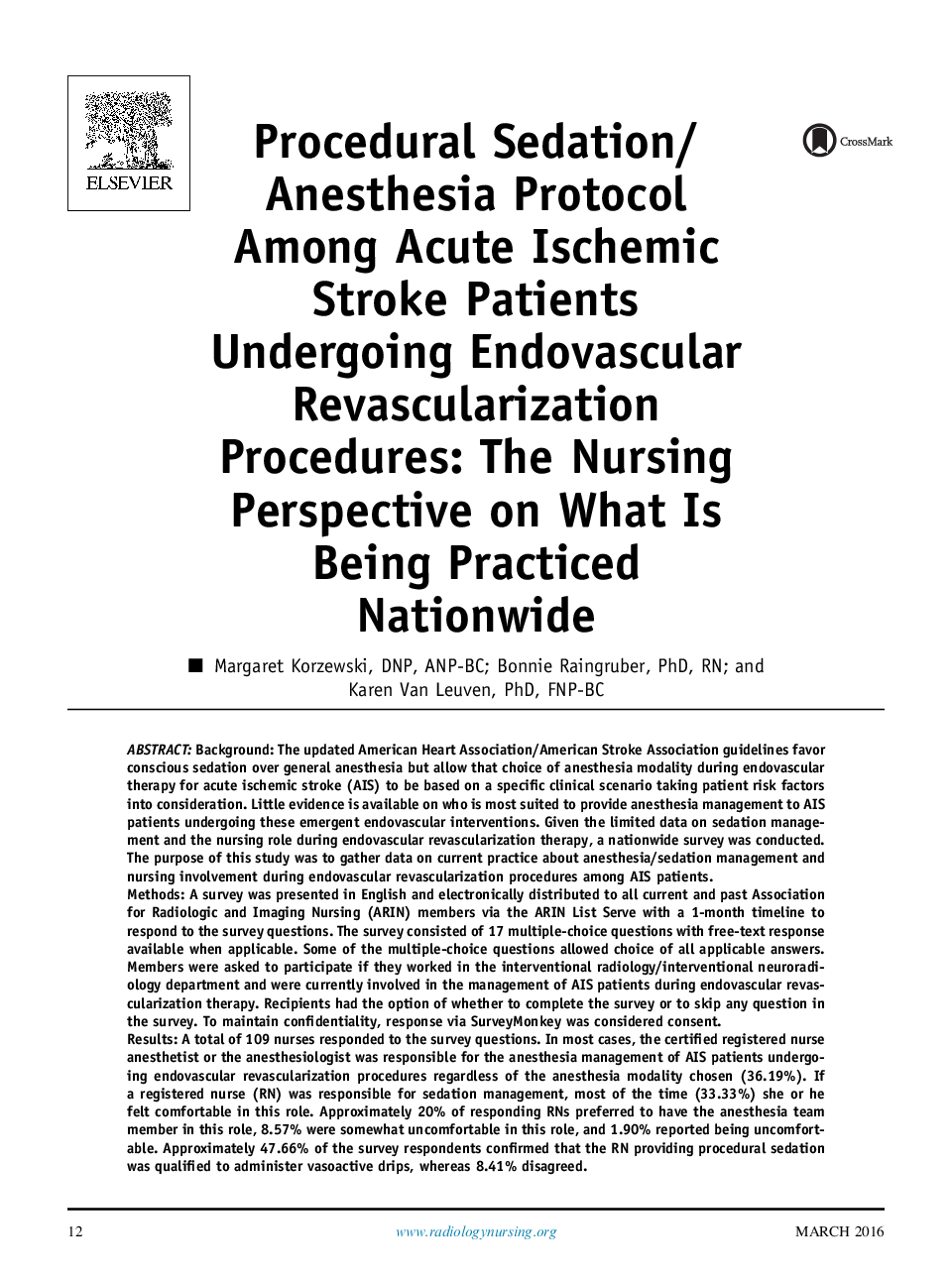| Article ID | Journal | Published Year | Pages | File Type |
|---|---|---|---|---|
| 2669205 | Journal of Radiology Nursing | 2016 | 7 Pages |
BackgroundThe updated American Heart Association/American Stroke Association guidelines favor conscious sedation over general anesthesia but allow that choice of anesthesia modality during endovascular therapy for acute ischemic stroke (AIS) to be based on a specific clinical scenario taking patient risk factors into consideration. Little evidence is available on who is most suited to provide anesthesia management to AIS patients undergoing these emergent endovascular interventions. Given the limited data on sedation management and the nursing role during endovascular revascularization therapy, a nationwide survey was conducted. The purpose of this study was to gather data on current practice about anesthesia/sedation management and nursing involvement during endovascular revascularization procedures among AIS patients.MethodsA survey was presented in English and electronically distributed to all current and past Association for Radiologic and Imaging Nursing (ARIN) members via the ARIN List Serve with a 1-month timeline to respond to the survey questions. The survey consisted of 17 multiple-choice questions with free-text response available when applicable. Some of the multiple-choice questions allowed choice of all applicable answers. Members were asked to participate if they worked in the interventional radiology/interventional neuroradiology department and were currently involved in the management of AIS patients during endovascular revascularization therapy. Recipients had the option of whether to complete the survey or to skip any question in the survey. To maintain confidentiality, response via SurveyMonkey was considered consent.ResultsA total of 109 nurses responded to the survey questions. In most cases, the certified registered nurse anesthetist or the anesthesiologist was responsible for the anesthesia management of AIS patients undergoing endovascular revascularization procedures regardless of the anesthesia modality chosen (36.19%). If a registered nurse (RN) was responsible for sedation management, most of the time (33.33%) she or he felt comfortable in this role. Approximately 20% of responding RNs preferred to have the anesthesia team member in this role, 8.57% were somewhat uncomfortable in this role, and 1.90% reported being uncomfortable. Approximately 47.66% of the survey respondents confirmed that the RN providing procedural sedation was qualified to administer vasoactive drips, whereas 8.41% disagreed.ConclusionsRandomized clinical trials are necessary to establish if there is truly a difference in clinical outcomes among AIS patients who are managed with general anesthesia versus conscious sedation during endovascular revascularization interventions, as well as comparing clinical outcomes of AIS patients from stroke centers where anesthesia is always provided by the anesthesia team versus stroke centers using a variety of providers. Large longitudinal studies are necessary as most facilities perform less than six procedures per month, and data will need to be correlated with National Institute of Health Stroke Scale scores and imaging findings.
